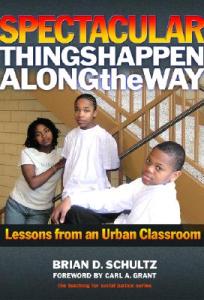An article I wrote about the importance of teaching social justice.
By: Gaby Guzman
For those of us who received an education, by whatever means, on the systems of oppression that exist in our world, once the veil dropped from our eyes, we could no longer live in neutrality and blissful ignorance. We are moved to act, to influence change…no matter how lofty our goals may seem. It is for this reason many of us decided to become teachers.
Education can be a powerful agent of change, not an equalizer of opportunity, but a tool for liberation. We all had our moment, or series of moments, where we experienced just how liberating an education can be. For me it began in a course called Knowledge and Power: Issues in Women’s Leadership. I took this course as a sophomore in college. The process of liberation did not occur instantly, but was rather a process, a journey, of unlearning all the “lies…
View original post 625 more words




